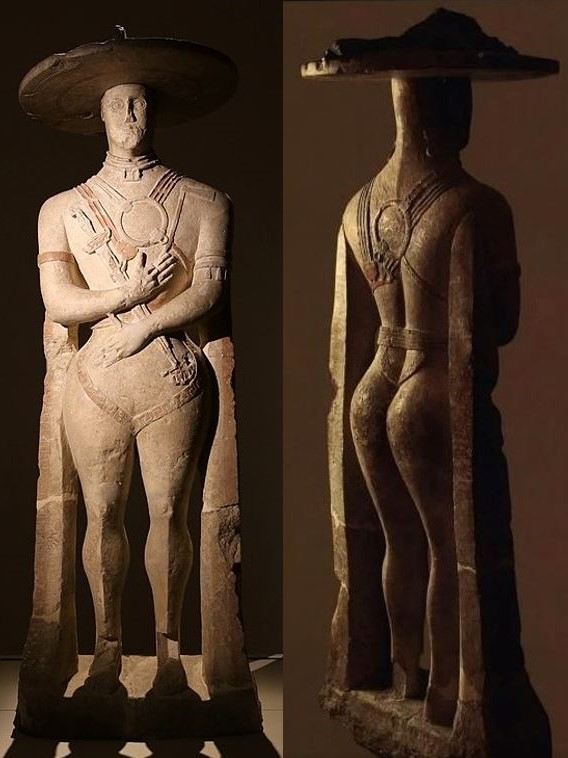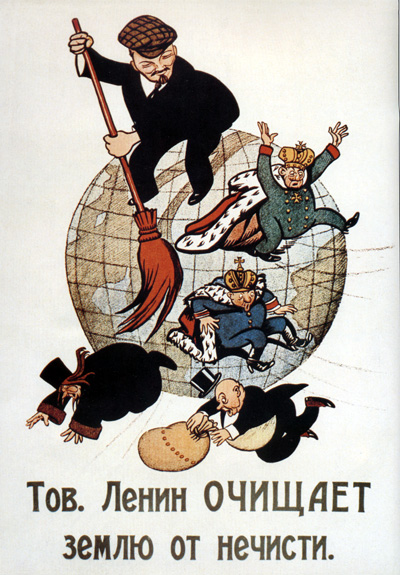The Warrior of Capestrano is a tall limestone statue of a Picene warrior, dated to around the 6th century BC. The statue was found in the territory of the Vestini, but depicts a man with a Picene helmet.
In 1934, a farmer working on his wineyard just outside the town of Capestrano in Abruzzo, Italy, found the buried statue of what appeared to be a warrior. The front was badly worn, but the back was in perfect condition. It was broken below the knees but the base with the legs and the hat were found a short distance away.
Further excavations revealed more than 100 graves belonging to a sixth-century village with no direct access to water. The people were sheep farmers and led a very hard life, with an average life expectancy of 25 years for women and slightly more for men.
They were Vestini, one of the many indigenous pre-Roman tribes who spoke very similar dialects of a language called Oscan, close to Latin and descended from an Indo-European mother tongue called Sabellic. Rome was then ruled by the Etruscans until the last king was overthrown in 509 BC and the Roman Republic was founded.
The statue is taller than the human remains in the cemetery: 171 cm without hat or pedestal. Carved from a single block of limestone, it depicts a warrior standing between two pillars that reach up to his armpits. A spear is engraved on the outside of each pillar, and on the front of the right pillar there is a vertical inscription that was finally deciphered in 2010: "Aninis made this statue of King Nevíi Pompíi". Who King Nevíi Pompíi was is a matter of speculation, but it seems likely that it was the powerful Vestini king Nevius Pompuledius, while Aninis could have been the carver or the one who paid for the statue.
The warrior wears a crested hat with a very wide brim, the underside of which is decorated with three concentric circles. The face appears to be covered by a mask that leaves the eyes and mouth uncovered, while the ears are painted red. Around the neck is a triple chain with a square amulet, and on the chest and back are two rings holding knotted straps attached to a decorated sword and a hatchet. On the right arm is a smooth bracelet and the hand is resting on the chest, touching the sword and the hatchet. The left arm has two bracelets, one with pendant decorations, and the hand rests in a similar position to the other, but on the stomach.
The warrior also wears a large war belt visible from the back, just above the buttocks, to which is attached a small triangular apron and a decorated band that follows the curve of the hips and ends in the crotch, right under a small slit that looks like a representation of the female sex – an extremely unusual depiction at a time when male warriors were always shown with their attributes. Similarly, the hips are wide and the waist thin, like a woman's, although the complete absence of breasts confuses matters.
Also intriguing is the warrior's hand posture, which is very similar to that of the Celtic warrior of Hirschlanden, also dated to the sixth century BC and found near Stuttgart in south-west Germany. The face, on the other hand, resembles those of the Nuragic giants of Mont'e Prama, dated between 900 and 750 BC and found in Sardinia. They hold a large shield over their heads, which is different from the large hat worn by our warrior, but seems to be similar in its use.
In fact, although the statue has its own specific and unique characteristics, scholars have detected similarities with Etruscan, Italic, Celtic and Greco-archaic styles, confirming the existence of vast trade networks that served as a means of cultural exchange.
With its intimidating appearance, the astonishing craftsmanship of its armour, its cross-cultural references and its uncertain gender, the warrior of Capestrano is one of the most suggestive and fascinating relics of early Italic history.


our fascination with slutty waisted men is older than capitalism and therefore has a stronger claim to being based in human nature